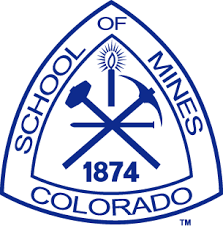
CSM STCH
| Project ID | f4873442-c5c0-477c-bc44-729cde959f70 |
|---|
Accelerated Discovery of Solar Thermochemical Hydrogen Production Materials via High-Throughput Computational and Experimental Methods
Recipient Colorado School of Mines/CSM (PI: Ryan O'Hayre)
Subs Colorado School of Mines/CSM (PI: Michael Sanders)
Water Splitting Technology STCH
Status Awarded
Abstract Accelerated Discovery of Solar Thermochemical Hydrogen Production Materials via High-Throughput Computational and Experimental Methods is an EERE/FCTO project led by that
Colorado School of Mines. Two-step metal oxide cycles for solar thermochemical hydrogen production (STCH) have the potential to produce industrial-scale quantities of renewable-energy sourced hydrogen. In step one, a suitable oxide is defected by driving oxygen from the lattice at high temperatures derived from concentrated solar energy. In step two, and upon exposure to steam at a lower temperature, oxygen is stripped from steam and transferred back into the oxide. This completes the cycle and results in the net production of hydrogen. The search for suitable metal oxides for use in these cycles has been hindered by the challenges of the serial testing of new material candidates. By merging combinatorial synthesis methods with combinatorial theoretical calculations, this new work can utilize parallel development and testing techniques to rapidly identify new potential STCH materials.
While ceria has shown itself to be the best performing and most cycle-tolerant STCH oxide, it requires very high reduction temperatures (>1500°C) to attain sufficient per-cycle hydrogen yield. This leads to severe efficiency penalties which make DOE’s 2020 target of 20% STH (solar-to-hydrogen) efficiency unattainable. This project will make significant in-roads to replacing ceria by obtaining outcomes along several distinct fronts: combinatorial DFT screening; combinatorial thin-film production and testing; bulk powder synthesis and characterization; and the integration of experimental results into the refinement of DFT methodologies and screening criteria. By combining these capabilities with the high-throughput nature of combinatorial synthesis and testing, the goal is to not only efficiently and methodically uncover new potential materials that can meet the 2020 targets, but to better understand fundamental links between oxide structure, chemical composition, and STCH performance. These outcomes should ultimately culminate in the discovery and characterization of new STCH materials that can produce hydrogen at quantities that will attain the 20% STH efficiency target and facilitate the production cost target of <$2/kg H2. This requires finding a material that reduces significantly at the target reduction temperature of 1350°C under moderate oxygen partial pressures of 10-100 ppm, and can split water while in the presence of hydrogen at a steam-to-hydrogen ratio of 10:1.
Headed by PI Ryan O’Hayre and co-PI Michael Sanders at Colorado School of Mines, this work leverages the resources made available by the DOE’s Energy Materials Network HydroGEN consortium. This includes the computational and combinatorial resources at the First Principles Materials Theory for Advanced Water Splitting Pathways Node and the Computational and
Experimental Tools for Enhanced Thermochemical Hydrogen Production and High-Throughput Experimental (HTE) Thin Film Combinatorial Capabilities nodes located at the National Renewable Energy Laboratory. Additional experimental support is provided by Sandia National Lab’s Virtually Accessible Laser Heated Stagnation Flow Reactor for Characterizing Redox Chemistry of Materials Under Extreme Conditions node.
